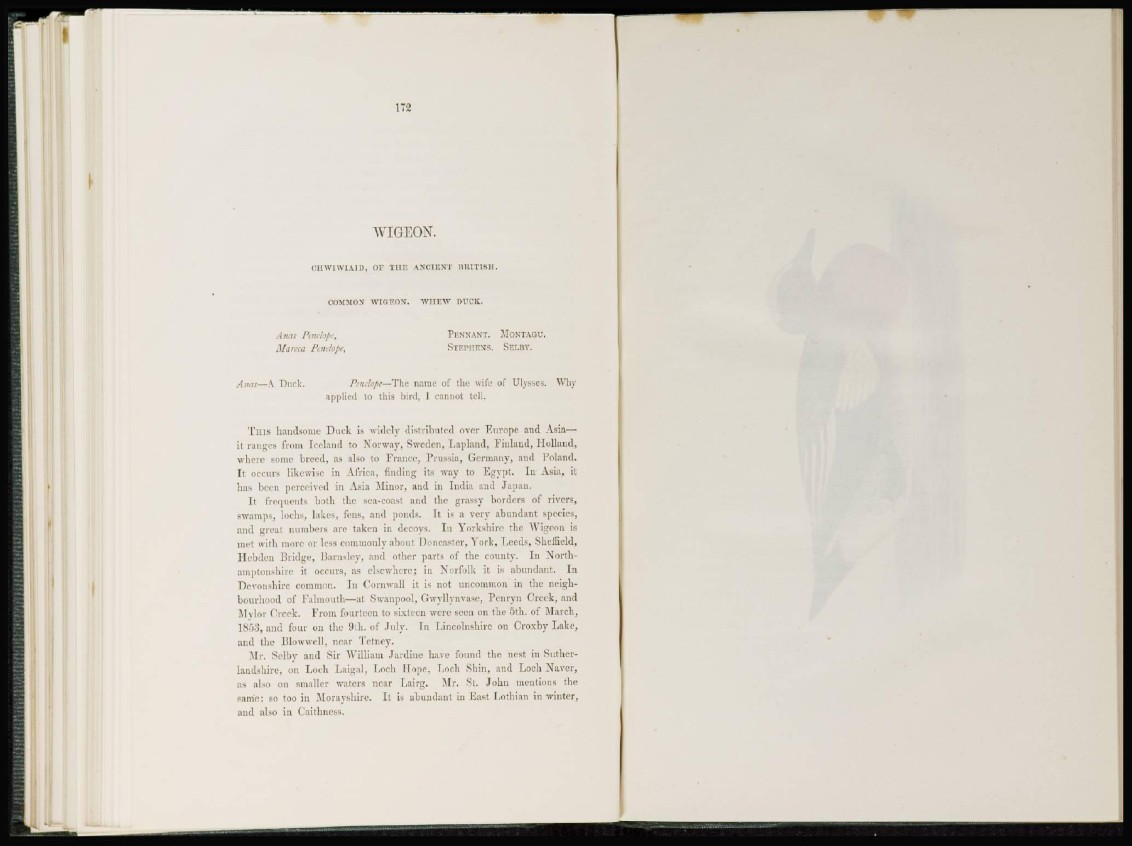
WTGEON.
CHWIWIAID, OF THE ANCIENT BRITISH.
COMMON WIOBOH. WHEW DUCK.
A nas Penelope, PENNANT. MONTAGU.
Mareca Penelope, STEPHENS. SELBY.
Anas—A Duck. Penelope—The name of the wife of Ulysses. Why
applied to this bird, I cannot tell.
T H I S handsome Duck is widely distributed over Europe and Asia—
it ranges from Iceland to Norway, Sweden, Lapland, Finland, Holland,
where some breed, as also to France, Prussia, Germany, and Poland.
I t occurs likewise in Africa, finding its way to Egypt. In Asia, it
has been perceived in Asia Minor, and in India and Japan.
I t frequents both the sea-coast and the grassy borders of rivers,
swamps, lochs, lakes, fens, and ponds. It is a very abundant species,
and great numbers are taken in decoys. In Yorkshire the Wigeon is
met with more or less commonly about Doncaster, York, Leeds, Sheffield,
Hebden Bridge, Barnsley, and other parts of the county. In Northamptonshire
it occurs, as elsewhere; in Norfolk it is abundant. In
Devonshire common. In Cornwall it is not uncommon in the neighbourhood
of Falmouth—at Swanpool, Gwyllynvase, Penryn Creek, and
Mvlor Creek. From fourteen to sixteen were seen on the 5th. of March,
1858, and four on the 9th. of July. In Lincolnshire on Croxby Lake,
and the Blowwell, near Tetney.
Mr. Selby and Sir Y\ illiam Jardine have found the nest in Suther-
Landshire, on Loch Laigal, Loch Hope, Loch Shin, and Loch Naver,
as also on smaller waters near Lairg. Mr. St. John mentions the
same; so too in Morayshire. It is abundant in East Lothian in winter,
and also in Caithness.